|
Welcome to Battleline! In this game you are a general in ancient Greece, facing off against a rival general for control of the battlefield.
The battlefield features nine strategic locations, which are represented by flags. On each turn, you deploy a troop card (from your six-card hand) to any unclaimed flag, then draw a new troop card from the sixty card deck.

The troop deck is made up of six suits valued 1-10, for a total of sixty cards.
You begin with six random troop cards.

|
|
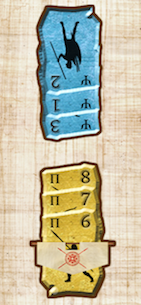 |
When three troops have been deployed to one side of a single flag, they become a formation. The player who deploys the stronger formation wins the flag.
In this example, the flag has been claimed by the bottom player, whose three yellow cards beat the opposing player's three blue cards. |
|
Formation strength ranks are similar to winning poker hands.
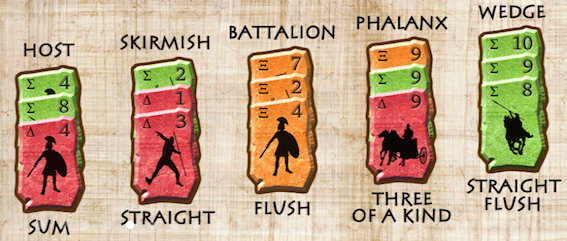
|
|
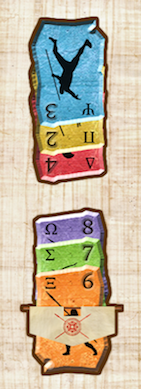 |
If your formation and that of your enemy are equally matched, the formation with the greater sum of individual troop values wins the flag.
In this example, the upper player and the lower player have both made a Skirmish (a straight). The lower player's Skirmish has a total card value of 21, which beats the opponent's total card value of 9, thus winning the flag. |
|
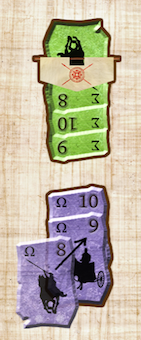 |
If your formation and that of your enemy are of equal rank and equal value then the formation completed first wins the flag.
In this example, both the upper and lower player have deployed cards of the same value, each making a Wedge (straight flush) formation with a total card value of 27. Because the higher player has already deployed his cards, the lower player will lose this flag even though their cards are of the same strength.
|
|
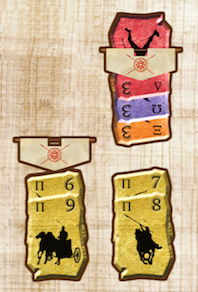 |
If it is evident at the end of your turn that the enemy cannot complete his formation (necessary cards have already been played) or cannot best yours, then you immediately claim the flag.
In this example, the upper player has a Phalanx (three of a kind) - a strong hand. The lower player has already played a yellow 7 and 8 opposite.
This means a higher Phalanx cannot be played to beat the upper player.
If the lower player could complete a Wedge instead, then this could still win the flag.
However, we can see that he has already played the yellow 6 and the yellow 9 at the neighbouring space.
This means that it is impossible to create a Wedge and no other formation can beat the Phalanx.
The upper player wins this flag.
|
|
| Battleline can be won in two ways. |
|
Breakthrough is the capture of three flags in a row.
In the following example, Polynikes has beaten Artemis by capturing three flags in a row:

|
|
Envelopment can be achieved through the capture of any five flags.
In the following example, Artemis has won 5 flags to Polynikes' 4 flags, thus emerging the victor:
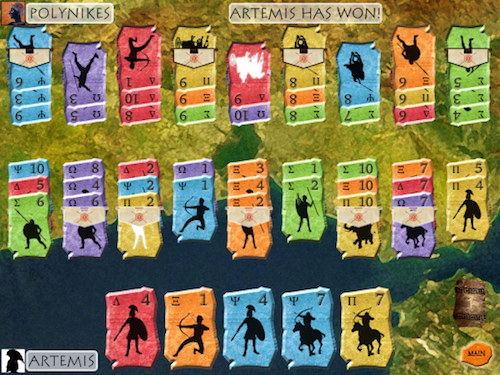
|
Once you've mastered basic Battleline, try an advanced game.
In the advanced game, you play with a seven card hand.
In a standard Battleline game, flags are claimed at the end of your turn.
However, you may select the popular rule variant which allows players to claim flags at the start of a turn.
This gives a player one last chance to keep the enemy at bay.
Additionally, you can draw from the tactics deck in lieu of the troop deck at the end of your turn. The ten tactics scrolls grant a unique edge in battle.
You may play a tactics card as your turn. You may only do this if the enemy has played as many or more tactics as you.
For the purposes of resolving flag claims, tactics cards in your hand have no effect on incomplete formations.
|
 |
Fog is played on an unclaimed flag. It negates formation rank, treating both player and enemy formations as if they were hosts. Only the sum of the troop values is evaluated.
|
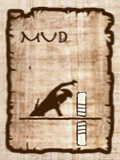 |
Mud is played directly on an unclaimed flag. Mud requires that four troops be deployed for a complete formation for either player at the selected flag.
|
 |
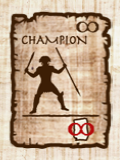 |
Leaders are deployed to a formation just like troops, but they represent any suit and any rank in a formation... which can turn the tide of battle! Deploy them wisely - only one leader can be used by each player.
|
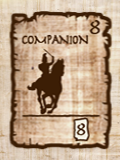 |
Companion Cavalry is deployed to a formation just like troops. It has a value of 8 in any suit in a formation. Use it to complete a phalanx of 8s, or a battalion in any suit.
|
 |
Shield Bearer is deployed to a formation just like troops. It can be valued as a 1, 2, or 3 in any suite when evaluating formations. Use it to complete a phalanx of 1s, 2s, or 3s or a battalion in any suit.
|
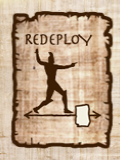 |
Redeploy allows the player to move a troop from one unclaimed flag to another. Use redeploy to craft a surprise attack, or fool your enemy into committing to a flag.
|
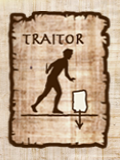 |
Traitor allows you to take an enemy troop from a formation at any unclaimed flag and add that troop to one of your own formations. Use this tactic to bolster your ranks and to undo the enemy's plans.
|
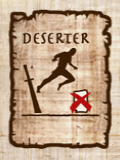 |
Deserter allows you to remove an enemy troop from an unclaimed flag. To play this tactic, simply select deserter, then drag the chosen enemy troop to the discard icon.
|
 |
Scout allows you to see the next three cards in either the troop or tactics decks. Return two of the cards you draw to the deck, leaving you with the best of the three - and knowledge of the next two cards to be drawn.
|
|
